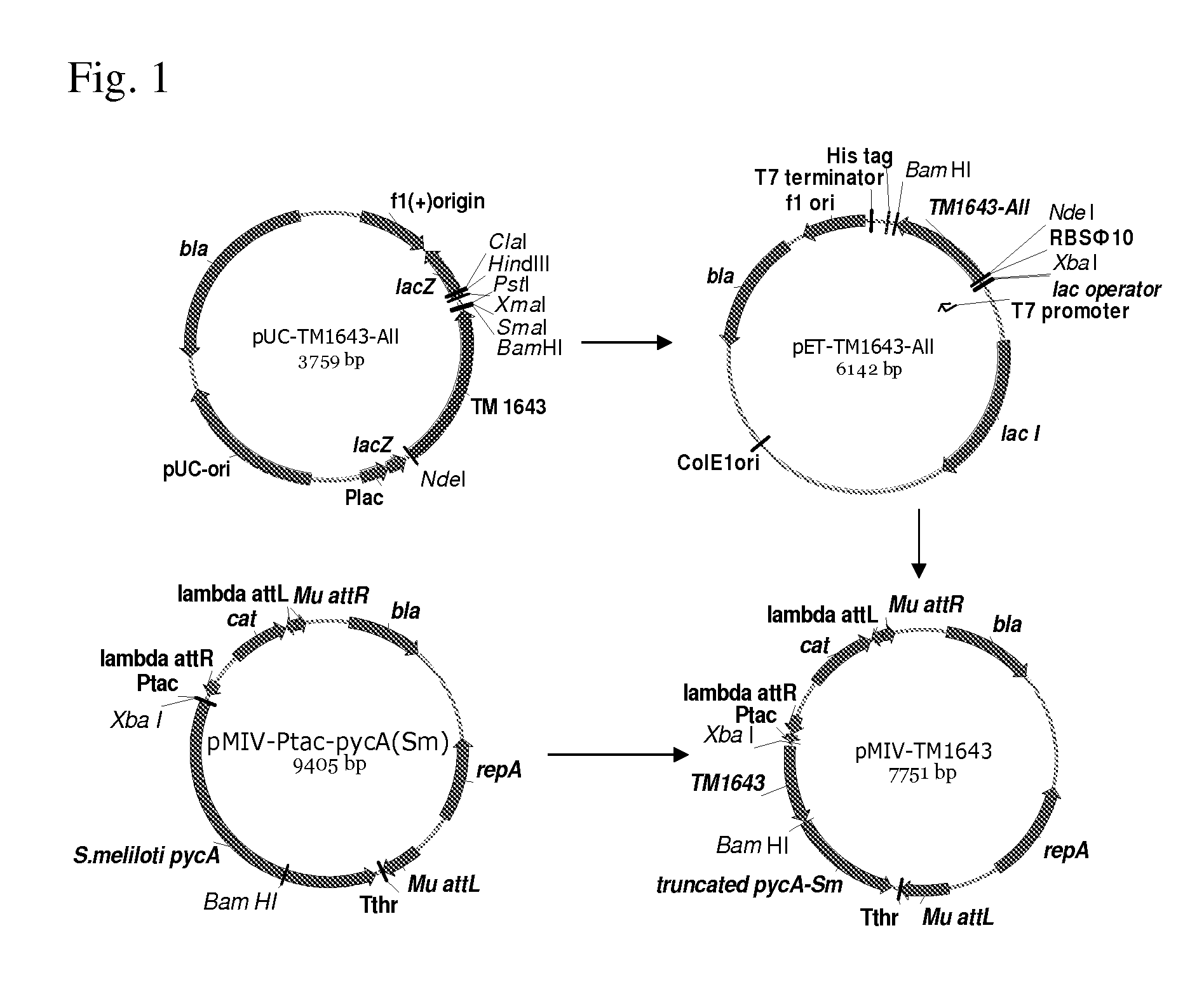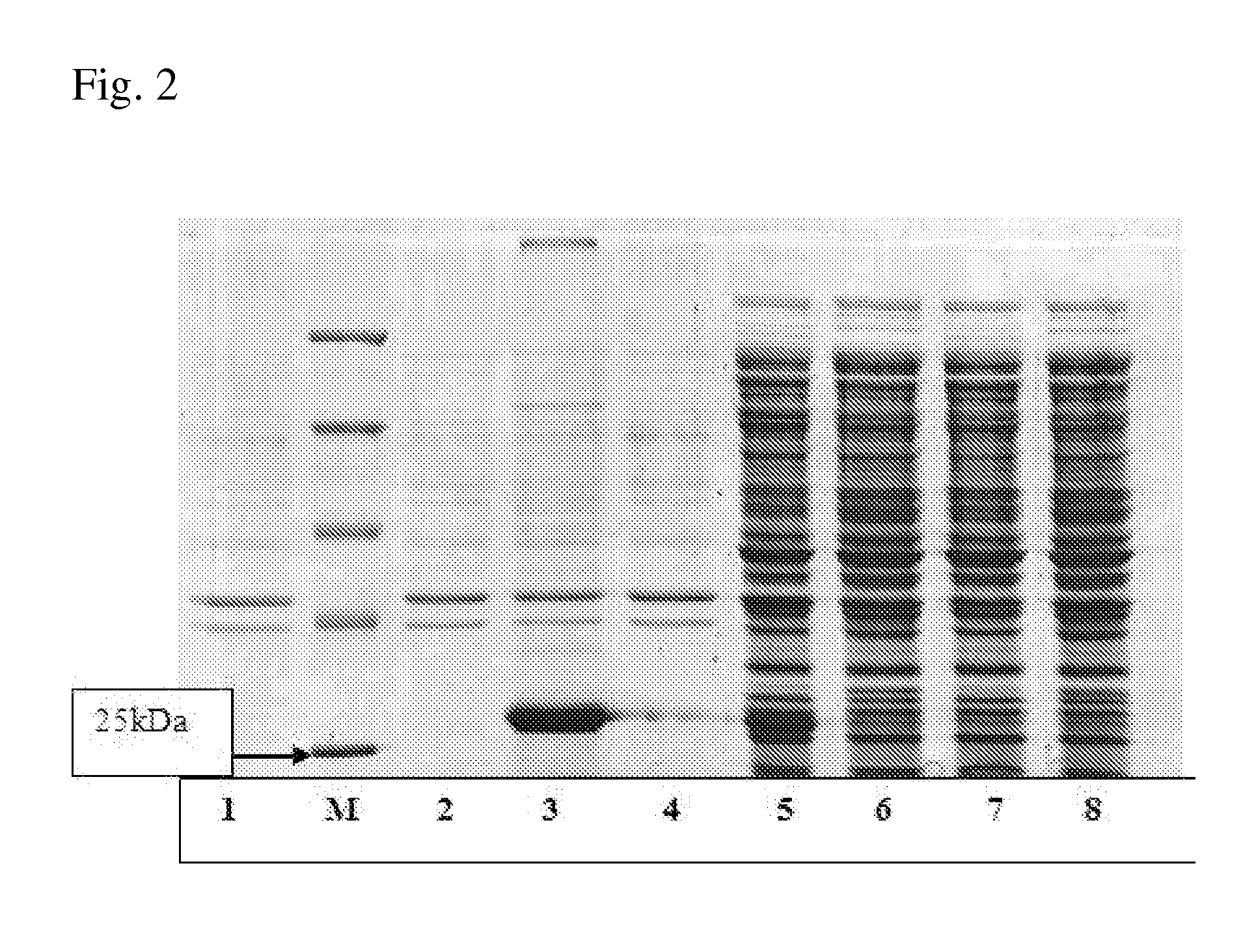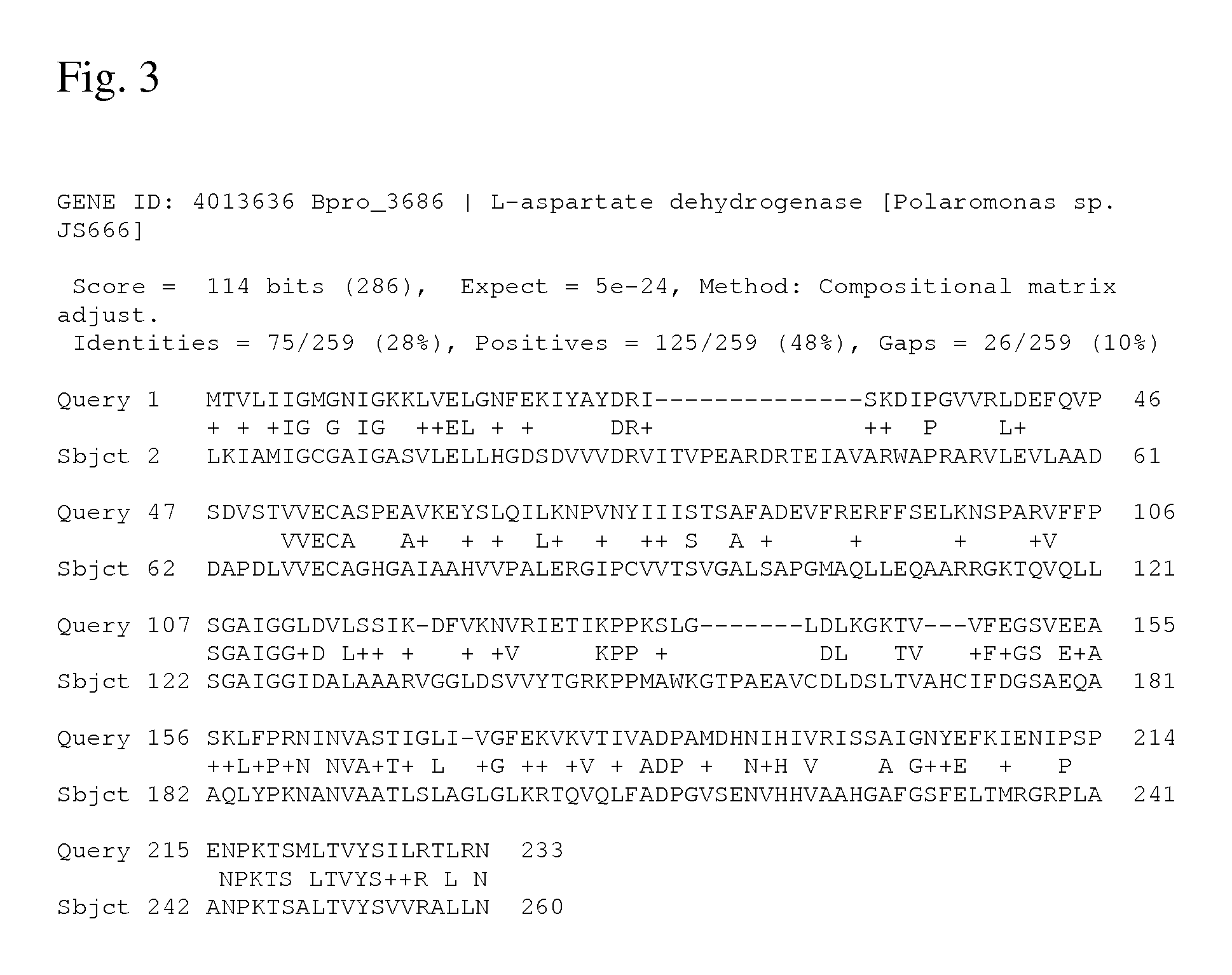Bacterium of enterobacteriaceae family producing L-aspartic acid or L-aspartic acid-derived metabolites and a method for producing L-aspartic acid or L-aspartic acid-derived metabolites
a technology of enterobacteriaceae and metabolites, which is applied in the field of microorganisms, can solve the problems of no reports of using a bacterium of enterobacteriaceae family modified to have aspartate, and achieve the effect of enhancing the productivity of l-aspartic acid-producing strains
- Summary
- Abstract
- Description
- Claims
- Application Information
AI Technical Summary
Benefits of technology
Problems solved by technology
Method used
Image
Examples
example 1
Introduction of the TM1643 Gene from Thermotaoga maritima to the Aspartic Acid-Producing Strain
[0202]The well-studied TM1643 gene from Thermotaoga maritima coding for aspartic acid dehydrogenase (Yang Zh. et al, J Biol Chem, 278(10): 8804-8808(2003)) was cloned and over-expressed in E. coli. A strain of Thermotaoga maritima can be available from ATCC.
[0203]Coding part of this gene contained 18 codons that are rare in E. coli. To provide efficient translation of the cloned gene in E. coli, the chemical synthesis and cloning of the DNA fragment containing the coding part of the aspartic acid dehydrogenase gene from T. maritima, in which all rare codons were substituted by the synonymous frequent codons, was ordered from Sloning BioTechnology, GmbH (German). This cloning technology is disclosed in WO2005071077. The nucleotide sequence of the TM1643 gene that contained substitutions of all rare codons and the amino acid sequences the protein encoded by this gene are shown in SEQ ID NO: ...
example 2
Cloning of the Putative Aspartate Dehydrogenase Genes
[0215]Polaromonas sp. J5666, bacterial species of biosafety level 1 living in an environment similar to that of P. ananatis, was selected as donor of the candidate aspartate dehydrogenase gene. Alignments of the aspartate dehydrogenase from T. maritima and its homolog (GENE ID: 4013636 Bpro—3686) from Polaromonas sp. J5666 is presented on FIG. 3. The strain Polaromonas sp. J5666 can be available from ATCC.
[0216]First, the putative aspartate dehydrogenase gene from Polaromonas sp. Bpro—3686 was cloned to the pET-22b(+) vector under control of the PT7 promoter and canonical SD-sequence AGGAGG. To construct pET-ADH-P(S) plasmid (FIG. 14), the DNA fragment including a coding part of the Polaromonas sp. Bpro—3686 putative aspartate dehydrogenase gene linked with canonical SD-sequence AGGAGG was generated in PCR with the primers AspP5S-Xba (SEQ ID NO: 21) and AspP3-BH(SEQ ID NO: 22). Chromosome DNA isolated from the Polaromonas sp. J566...
example 3
Purification and Characterization of the Aspartate Dehydrogenase from Polaromonas sp. JS666
[0224]The corresponding protein designated hereinafter as ADH was purified from BL21(DE3) strain harboring pET-ADH-P(S) plasmid. The procedure for ADH purification from soluble fraction of crude cell extracts was developed using precipitation in ammonium sulfate solution, anion-exchange chromatography and affinity chromatography. The ADH activity was determined spectrophometrically by measuring the absorbance increase at 340 nm at 29° C. The assay mixture contained 0.1M TRIS-HCl buffer, pH 9.8, 1 mM NAD+, 5 mM aspartic acid in 1 ml of final volume. The results are presented in Table 9. These data show that the implemented procedure resulted in 77-fold ADH purification with 20% yield. The homogeneity of the purified ADH was assessed by SDS / PAGE and a major band with molecular mass of about (30±3) kDa was obtained (FIG. 2). The determined molecular mass of the ADH corresponds to the value predic...
PUM
| Property | Measurement | Unit |
|---|---|---|
| temperature | aaaaa | aaaaa |
| temperature | aaaaa | aaaaa |
| temperature | aaaaa | aaaaa |
Abstract
Description
Claims
Application Information
 Login to View More
Login to View More - R&D
- Intellectual Property
- Life Sciences
- Materials
- Tech Scout
- Unparalleled Data Quality
- Higher Quality Content
- 60% Fewer Hallucinations
Browse by: Latest US Patents, China's latest patents, Technical Efficacy Thesaurus, Application Domain, Technology Topic, Popular Technical Reports.
© 2025 PatSnap. All rights reserved.Legal|Privacy policy|Modern Slavery Act Transparency Statement|Sitemap|About US| Contact US: help@patsnap.com



